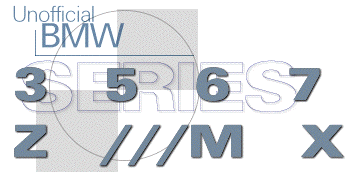|
Ron Stygar Carl Buckland Dale Beuning Forums Help
Snell Home FAQs about Snell and Helmets [INLINE] Q1: Who/What is Snell?
[INLINE] William "Pete" Snell was an amateur auto racer. He
died needlessly in a racing event in 1956 when his then
state-of- the-art helmet failed utterly to protect him. His
friends, including Dr. George Snively, formed the Snell
Memorial Foundation to remember Pete Snell and to encourage the
development and use of truly protective helmets.
Q2: Why wear helmets?
Auto racing, bicycling and motorcycling all impose risks of
head injury leading to death or permanent disability. Helmets
are the single most effective means of preventing these
injuries.
Q3: Why wear Snell-certified helmets?
The protective capability of a particular helmet is difficult
to measure. One can quickly judge a helmet for style and price,
and, with only a little effort, for fit and comfort as well.
But who knows what that helmet can do when someone's skill,
experience and every other precaution have failed, when his
helmet's the only thing between his head and a violent
collision. The Snell Foundation knows. We destroy thousands of
helmets every year to find out. Snell Certification is our
assurance that a helmet has measured up to the highest
standards for protective performance time and again.
Q4: Why Snell certification and not some other assurance?
[INLINE] Snell Standards are the most demanding. They are set
to levels of protective performance that only the best, most
protective headgear will meet. But Snell Certification is more
than high Standards, it is testing. Helmets must first pass
Snell Certification testing by Snell technicians in Snell labs
to qualify for our programs. Then samples of these helmets
acquired directly from retailers and distributors must continue
to pass in order to remain in our programs. Snell Certification
is your best assurance that your helmet will perform its most
important function: save your life when all your judgement,
skill and luck have failed to keep you from harm.
Q5: How much does Snell cost and who pays?
Snell bills the manufacturer for testing, the acquisition of
random samples and for each Snell Certification Label that goes
into a certified helmet. However, these costs, along with every
other production cost, insurance premium and sales tax get
passed along to you the consumer. Approximate Snell Program
charges per helmet are listed in the following table:
Snell Program Charges Certification Test Random Sample Test
Snell Label Approx Per Helmet Charges
SA-95 Racing $875 $120 $1.00 $1.56
M-95 Motorcycle $820 $120 $0.40 $0.64
B-95 & N-94 Bicycle & Multisports $610 $120 $0.30 $0.43
Q6: Why Snell-certified helmets cost more?
Snell Certified helmets are available in almost every price
range. Other features such as style and comfort are much more
important in determining helmet price. However, building
protective performance into a helmet does cost money. The costs
are in the design and development, the materials and, most of
all, in quality control. Snell Certification is your best
assurance that the manufacturer has made, and continues to
make, this investment in your safety.
Q7: What does Snell do with the money?
The Foundation spends the biggest part of its income on the
Certification Programs. There are rents and maintenance on the
test facilities in the UK and California, salaries for the test
technicians and other employees, equipment repair and
replacement, and all the other expenses associated with any
non-profit effort. The rest goes to research and education.
Q8: What are the differences between SA Standard and M Standard? [INLINE] SA Standard was designed for auto racing while M Standard was for motorcycling. There are three major differences between them: (1) SA standard requires flammability test while M standard does not; (2) SA standard allows narrower visual field than M standard; (3) SA standard has rollbar impact test while M standard does not.
Q9: How a helmet works? Q10: Why replace helmet every five years? The five year replacement recommendation is a consensus position from both the helmet manufacturers and the Snell Foundation. Outgassing of glues which can dissolve liner material, general liner detoriation as a function of hair oils, and body fluids, and normal "wear and tear" all contribute to helmet degradation. Additionally, experience indicates there will be a noticable improvement in the protective characteristic of helmets over a five year period. Thus, the recommendation for five year helmet replacement is a judgement call stemming from prudent safety philosophy. [LINK] Back to Snell's Home Page |

